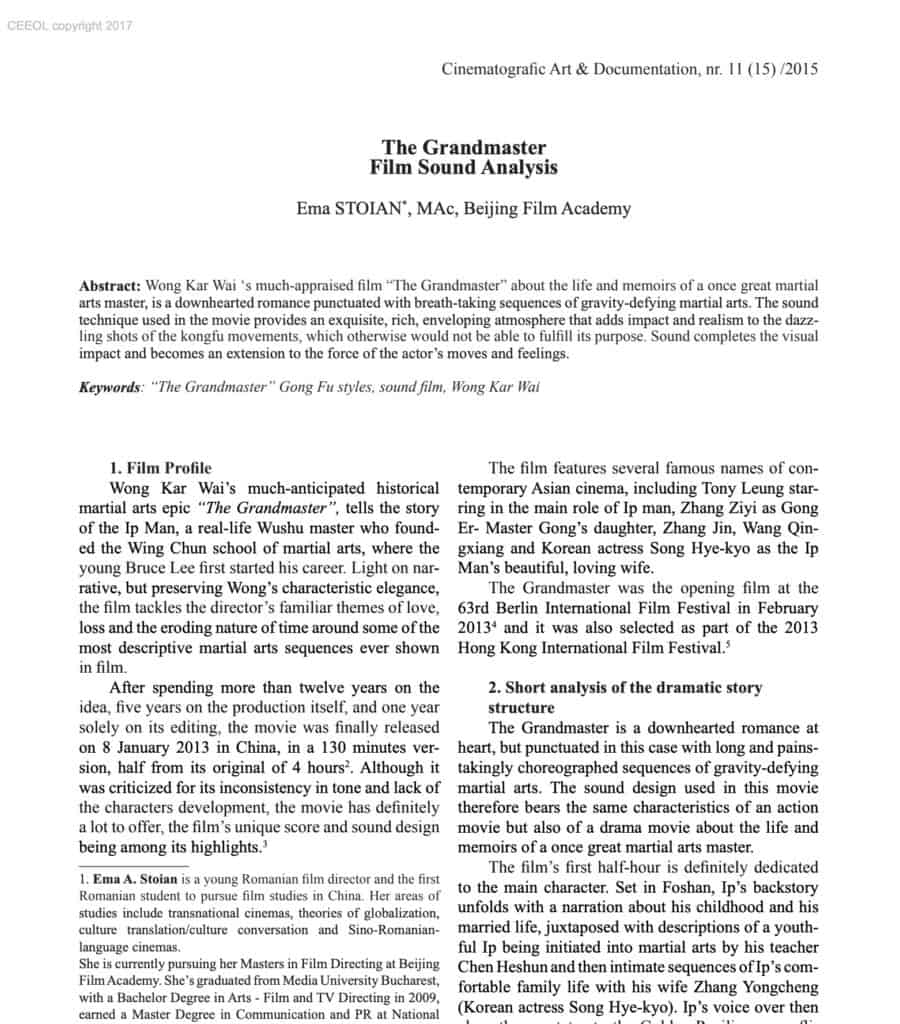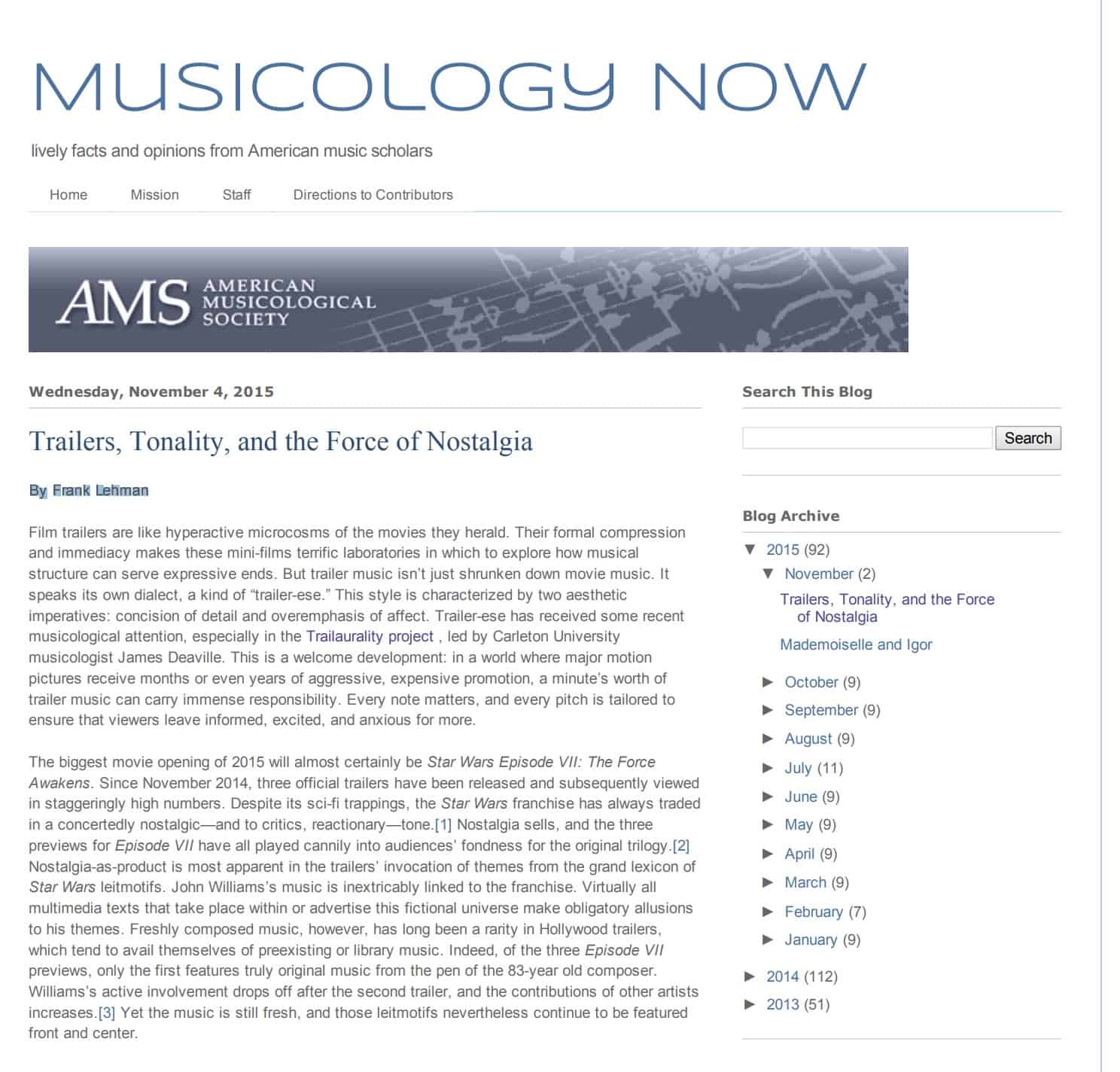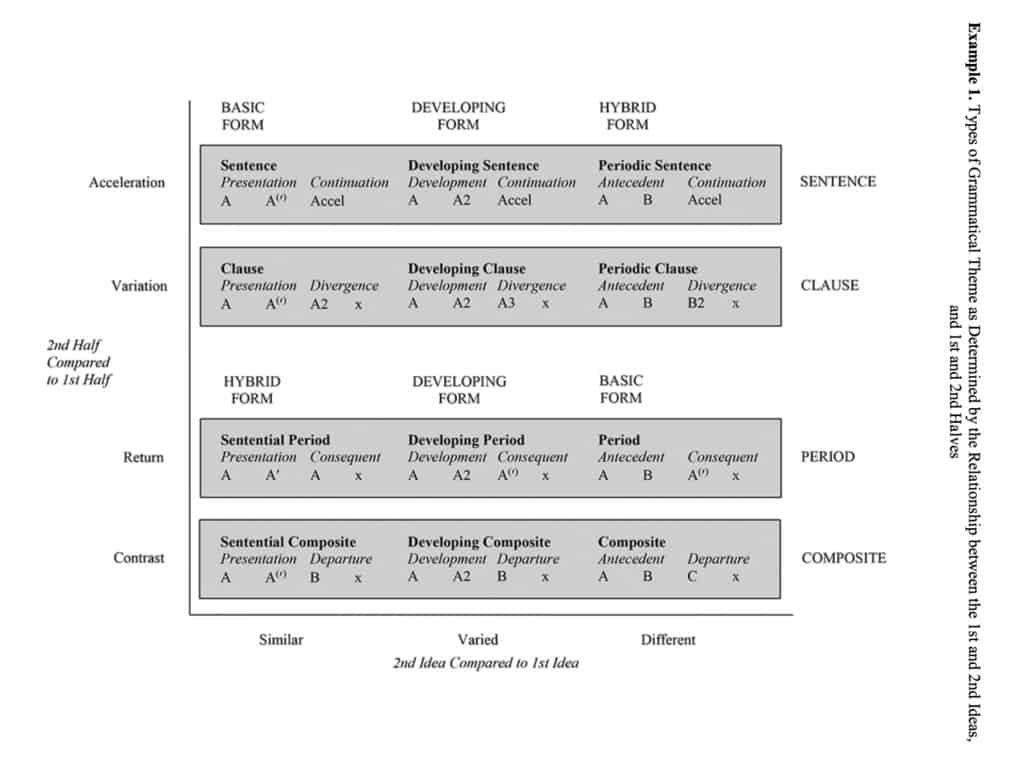Paper
The Grandmaster – Film Sound Analysis by Andreea-Ema Stoian

The Grandmaster – Film Sound Analysis
Wong Kar Wai ‘s much-appraised film “The Grandmaster” about the life and memoirs of a once great martial arts master, is a downhearted romance punctuated with breath-taking sequences of gravity-defying martial arts. The sound technique used in the movie provides an exquisite, rich, enveloping atmosphere that adds impact and realism to the dazzling shots of the kung fu movements, which otherwise would not be able to fulfill its purpose. Sound completes the visual impact and becomes an extension to the force of the actor’s moves and feelings.
You can read the paper here.

Expert Guides
Trailers, Tonality, and the Force of Nostalgia By Frank Lehman

Trailers, Tonality, and the Force of Nostalgia
Film trailers are like hyperactive microcosms of the movies they herald. Their formal compression and immediacy makes these minifilms terrific laboratories in which to explore how musical structure can serve expressive ends. But trailer music isn’t just shrunken down movie music. It speaks its own dialect, a kind of “trailerese.” This style is characterized by two aesthetic imperatives: concision of detail and overemphasis of affect. Trailerese has received some recent musicological attention, especially in the Trailaurality project , led by Carleton University musicologist James Deaville. This is a welcome development: in a world where major motion pictures receive months or even years of aggressive, expensive promotion, a minute’s worth of trailer music can carry immense responsibility. Every note matters, and every pitch is tailored to ensure that viewers leave informed, excited, and anxious for more.
The biggest movie opening of 2015 will almost certainly be Star Wars Episode VII: The Force Awakens. Since November 2014, three official trailers have been released and subsequently viewed in staggeringly high numbers. Despite its scifi trappings, the Star Wars franchise has always traded in a concertedly nostalgic—and to critics, reactionary—tone.[1] Nostalgia sells, and the three previews for Episode VII have all played cannily into audiences’ fondness for the original trilogy.[2] Nostalgiaasproduct is most apparent in the trailers’ invocation of themes from the grand lexicon of Star Wars leitmotifs. John Williams’s music is inextricably linked to the franchise. Virtually all multimedia texts that take place within or advertise this fictional universe make obligatory allusions to his themes. Freshly composed music, however, has long been a rarity in Hollywood trailers, which tend to avail themselves of preexisting or library music. Indeed, of the three Episode VII previews, only the first features truly original music from the pen of the 83year old composer. Williams’s active involvement drops off after the second trailer, and the contributions of other artists increases.[3] Yet the music is still fresh, and those leitmotifs nevertheless continue to be featured front and center.
You can read the full paper here.
Analysis of Film Music
Mark Richards Paper: Film Music Themes: Analysis and Corpus Study – EXAMPLES AND APPENDIX

Film Music Themes: Analysis and Corpus Study – EXAMPLES AND APPENDIX
The phrase structure of film music themes remains virtually unexplored in scholarly literature. In Mark Richards’s article from 2016, he proposes an analytical system that expands and adapts Caplin 1998 in order to categorize the gamut of film music themes in some detail. This system is then applied to a cross-section of 482 themes from Oscar-nominated scores ranging from the early 1930s to the present day. In doing so, notable divisions appear around 1960 and 1990, times that coincide with trends that drastically affected the composition of film music in general.

Expert Guides
Frank Lehman’s Paper Film-as-Concert Music and the Formal Implications of ‘Cinematic Listening’

Frank Lehman discusses what it means for film music – subordinated, contingent, ‘unheard’ – to be plucked from its intended context and placed at the forefront of the listener’s attention?

The tradition of excerpting and arranging movie scores for the concert hall poses this question sharply. While scholarship on ‘cinematic listening’ has picked up in recent years, the specifically music-theoretical issues raised by this repertoire have been largely unaddressed. In this article, Frank argues that film-as-concert music presents hearing ‘cinematically’ as a valid alternative to structural modes of listening, a form of hearing that subverts both naive formalism and reflexive anti-formalism. Following a discussion of theoretical and interpretative priorities for analyzing film-as-concert music, he begins an investigation of a subset of the film-as-concert corpus: stand-alone scherzi originating from action set pieces. More than any other type of underscore, action cues answer to dramatic, editorial, and visual imperatives rather than to ‘absolute’ logic.
-

 Vetted2 months ago
Vetted2 months ago11 Best Gore Websites to Explore the Darker Side of the Internet
-

 Music Theory2 weeks ago
Music Theory2 weeks agoUnlocking Nature’s Harmony: The Power of 432 Hz Frequency in Sound & Music for Enhanced Living and Well-Being
-

 Vetted1 month ago
Vetted1 month ago15 Best Commercial Vacuum Cleaners for Heavy-Duty Cleaning Jobs
-

 Vetted2 months ago
Vetted2 months ago15 Best Essential Oils Brands to Elevate Your Aromatherapy Experience
-

 Sound Design2 weeks ago
Sound Design2 weeks agoWhat Is the Difference Between a Sound Engineer and A Sound Designer?
-

 Native Instruments Kontakt2 weeks ago
Native Instruments Kontakt2 weeks agoVOCAL AI – Animated Intelligence: The Ultimate Vocal Playground
-

 Sound Design2 weeks ago
Sound Design2 weeks agoWhy Sound Engineer
-

 Vetted2 months ago
Vetted2 months ago15 Best Concrete Sealers for Ultimate Protection and Longevity









